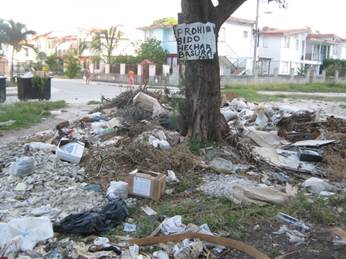
Fernando Dámaso, 3 October 2018 — Five reasons that demonstrate the inviability of socialism in Cuba.
1. In 1958, Cuba occupied the 29th place among the largest economies in the world. After 60 years of the socialist experiment, it has come to occupy one of the last places, both for its economy and its GDP.
2. From being the largest sugar producer in the world, with annual productions that grew from a few thousand to 7 million tons in 1952, with an annual average of 4-5 million, for years the country now produces a figure similar to that of 1894, which was 1,054,214 tons.
3. From having, in 1837, the first railroad in Ibero-America and the third in the world, it now has the worst railroad, with obsolescence in railroads and equipment, incapable of even working badly and providing an elementary service. The same has happened with vehicular transport in roads and towns and cities, with roads in terrible condition and insufficient car parking.
4. From having, in 1958, important light industry, where more than 10,000 different articles were manufactured, which satisfied most of the national demand, today everything has to be imported, including items as simple as toilet paper, detergents and jams.
5. From being a hygienic country, characterized by cleanliness and the state of conservation of its towns and cities, it has become an unhygienic, dirty country with ruined buildings, with 45% of the homes at the national level, in a “bad and regular” state.
There are many more economic, political and social reasons to demonstrate the nonviability, shown by chain of failures of socialism in Cuba, but these five are more than enough.
In short, socialism has shown its unviability wherever it has been tried, including China and Vietnam, where they have had to adopt the market economy to get out of arrears and achieve development, although they still maintain their political-partisan status.
